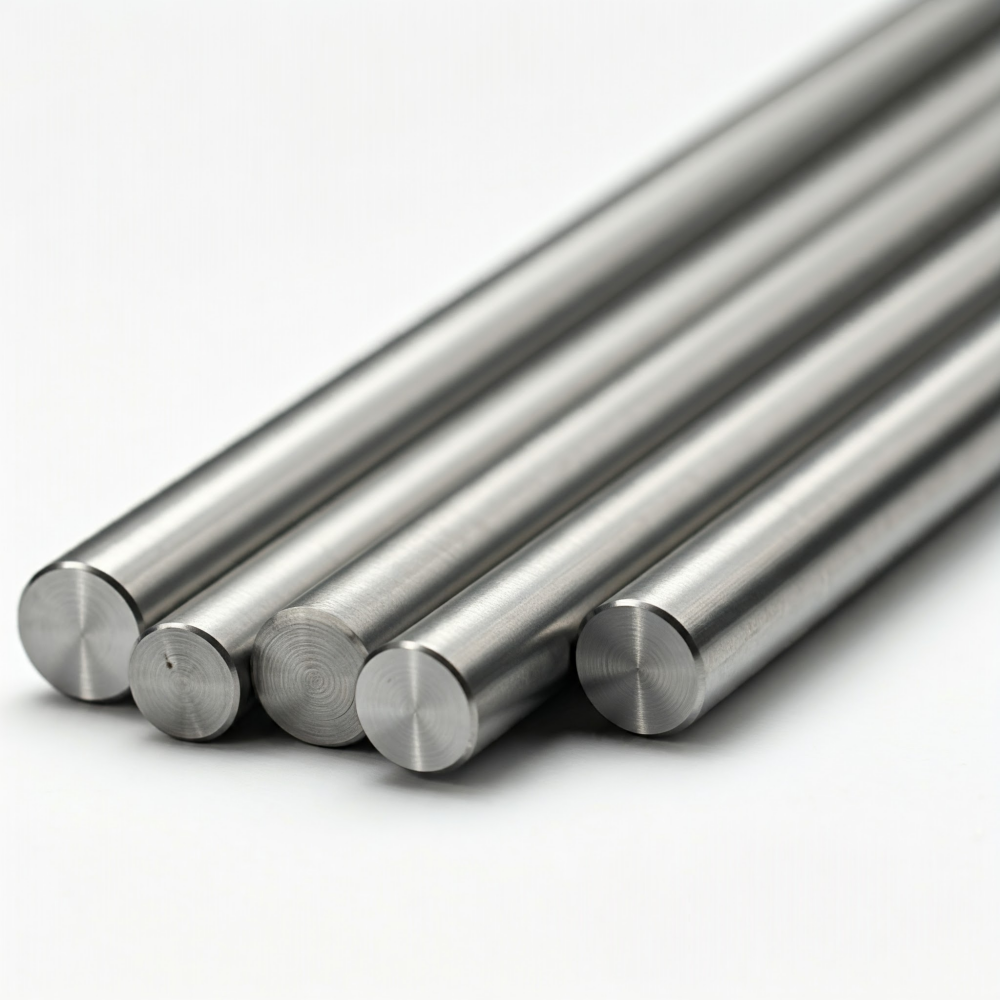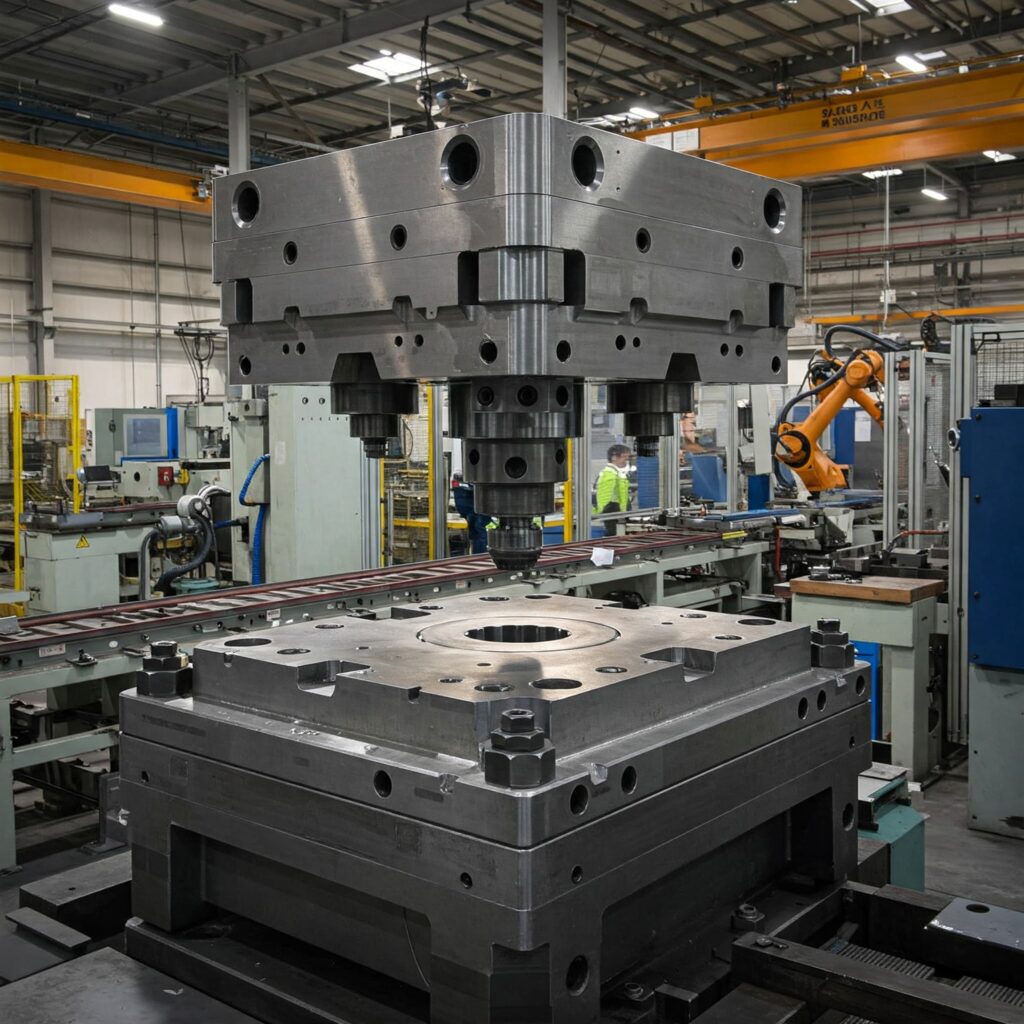Estimated reading time: 11 minutes
Key Takeaways
- H13 tool steel excels in high-temperature applications but has limitations like low corrosion resistance and risks of brittleness.
- Proper design, heat treatment, and maintenance are crucial to maximizing H13’s performance and avoiding failures.
- Challenges in processing H13 include machinability issues, high risks in welding, and complications in grinding techniques.
- Heat treatment is critical for H13; improper processes can lead to decarburization, distortion, and retained austenite problems.
- In-service failures may arise from thermal fatigue, plastic deformation, and gross cracking under extreme conditions.
Table of contents
H13 tool steel stands as a powerhouse in the hot-work category, widely celebrated for its exceptional combination of hot hardness, toughness, and resistance to thermal fatigue. Its unique properties make it an indispensable material in demanding high-temperature applications such as die casting molds, hot forging dies, and hot extrusion tooling. This widespread adoption underscores its proven reliability and performance in environments where other steels would quickly fail.
However, even the most robust materials, like H13, possess inherent limitations that, if not properly understood and managed, can lead to costly premature failures. The performance of any tool is not solely dependent on the steel’s inherent properties, but also critically on proper design, accurate manufacturing, correct heat treatment, and diligent maintenance. Successfully navigating these complexities is key to unlocking H13’s full potential and maximizing tooling life.
This article provides a comprehensive examination of the inherent material limitations of H13, highlighting the significant challenges associated with its processing and critical heat treatment, and analyzing the common in-service failure modes.
Inherent Limitations of H13 Material
Although H13 tool steel demonstrates outstanding performance in demanding applications, its inherent material limitations must be fully understood and properly managed by users to ensure optimal performance and service life.
Corrosion Resistance: A Critical Weakness
Although H13 tool steel contains approximately 5% chromium (Cr), it is not stainless steel and lacks significant corrosion resistance. Effective rust prevention typically requires chromium content exceeding 11-12%. As a common iron-based alloy, H13 is prone to rusting when exposed to air and moisture, particularly in harsh industrial environments, cooling water, or corrosive plastics. H13 tool surfaces may develop pitting corrosion in these environments, creating stress concentration points that lead to cracking. This significantly shortens effective service life and degrades overall performance. Therefore, corrosion issues must be mitigated through surface treatments or environmental controls when using H13.
Brittleness and Toughness at Extreme Temperatures
H13 exhibits excellent thermal hardness and high-temperature stability, but it also has specific temperature requirements during heat treatment and use.
When H13 steel is used beyond the recommended temperature range (especially above 650°C/1202°F), the polymorphic α→γ phase transformation results in a significant reduction in strength, thereby increasing the risk of failure.
Incorrect tempering can leave undesirable austenite in the microstructure, which is less hard than martensite and less stable. This residual austenite may transform into unquenched martensite under applied stresses, causing localized embrittlement and making the steel highly susceptible to cracking under impact loads. H13 steel is prone to “temper brittleness,” particularly when tempered around 500°C (930°F), where a dangerous state of high hardness but extremely low toughness may occur.
Excessively high austenitizing temperatures, while dissolving more carbides, may cause coarse austenite grains and exacerbate grain boundary embrittlement, significantly reducing toughness.
To address these issues, precise control of austenitizing and tempering temperatures (often requiring multiple tempering cycles) is essential to achieve the optimal balance between hardness and toughness while ensuring microstructural stability.
Challenges in Processing
This section examines the challenges involved in manufacturing and processing H13 steel.
Machinability: Toughness Comes at a Cost
H13 tool steel exhibits high hardness and excellent toughness after heat treatment, but this also complicates subsequent machining processes, leading to accelerated tool wear, extended processing times, and increased manufacturing costs. With a machinability rating of 70 compared to 1% carbon steel at 100, H13 demands careful execution. We offer three recommendations:
- Process H13 steel in its softened annealed state whenever possible.
- Utilize advanced materials like cemented carbides or polycrystalline cubic boron nitride (PCBN). PCBN tools, for example, can achieve excellent surface finishes on hardened H13 (~52 HRC).
- For hardened H13 (54-55 HRC), surface roughness values of 0.14–0.48 µm have been achieved with coated solid carbide drills at cutting speeds of 20–45 m/min and feed rates of 0.1–0.2 mm/rev. Small depths of cut (0.05–0.3 mm) and feed rates (0.05–0.2 mm/rev) are common in hard machining to manage intense pressures and thermal stresses.
Welding: A High-Risk Repair Method
Welding H13 tool steel is prone to cracking. As a high-hardenability alloy, H13 forms brittle untempered martensite in the heat-affected zone (HAZ) upon rapid cooling, substantially increasing the risk of hydrogen-induced cracking (HIC), also known as cold cracking. This type of cracking can manifest days or weeks post-welding, often after initial inspections. Additionally, H13’s alloy content can contribute to hot cracking (solidification cracking) if low-melting-point films, often enriched with sulfur, phosphorus, silicon, or manganese, form at grain boundaries. Non-homogenized microstructures and excessive hardness in welded zones further elevate this risk.
To minimize these welding risks, we offer the following recommendations.
- Preheating H13 steel can slow the cooling rate of the heat-affected zone, prevent the formation of untempered martensite, and promote hydrogen diffusion within the steel. Recommended preheating temperatures typically range from 100°C to 200°C.
- The selected filler metal must closely match H13’s chemical composition and heat treatment response. For hardened H13, the filler must achieve the desired hardness without requiring subsequent heat treatment.
- Post-Weld Heat Treatment (PWHT) ensures the complete transformation of retained austenite and thorough stress relief, thereby preventing embrittlement.
The Perils of Grinding
Grinding H13 tool steel is a common machining process. Improper grinding generates intense localized heat, and this excess thermal energy can cause various detrimental changes to the surface integrity of the tool.
- Localized Rehardening (White Layer): Rapid cooling immediately after heating causes surface rehardening, resulting in a brittle, untempered martensitic “white layer” with a hardness of 65-70 HRC.
- Surface Softening: Low-intensity but sustained heat can cause localized tempering or softening of the surface layer.
- Grinding Cracks: The most severe consequence is the formation of microcracks on the tool’s surface. These cracks arise from the thermal expansion of the heated surface, restrained by cooler subsurface material, followed by contraction during cooling. If the resulting thermal stresses exceed the material’s strength, cracks form. These microscopic cracks are often invisible to the naked eye, but propagate deeper with abusive passes. They are critical stress concentrators and common initiation sites for primary tool and fatigue failures. Employing appropriate grinding wheels, optimal speeds, and sufficient, correctly directed coolant flow is paramount to preventing such integrity-compromising damage.
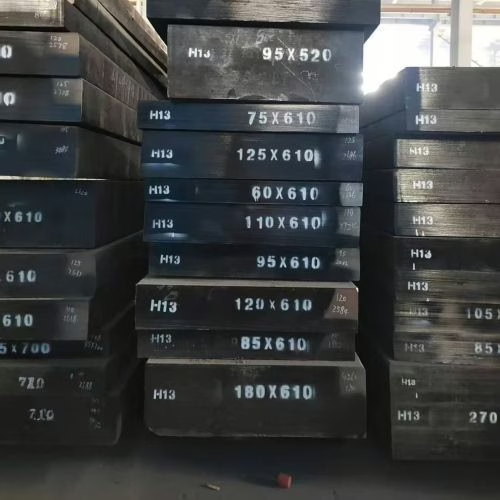
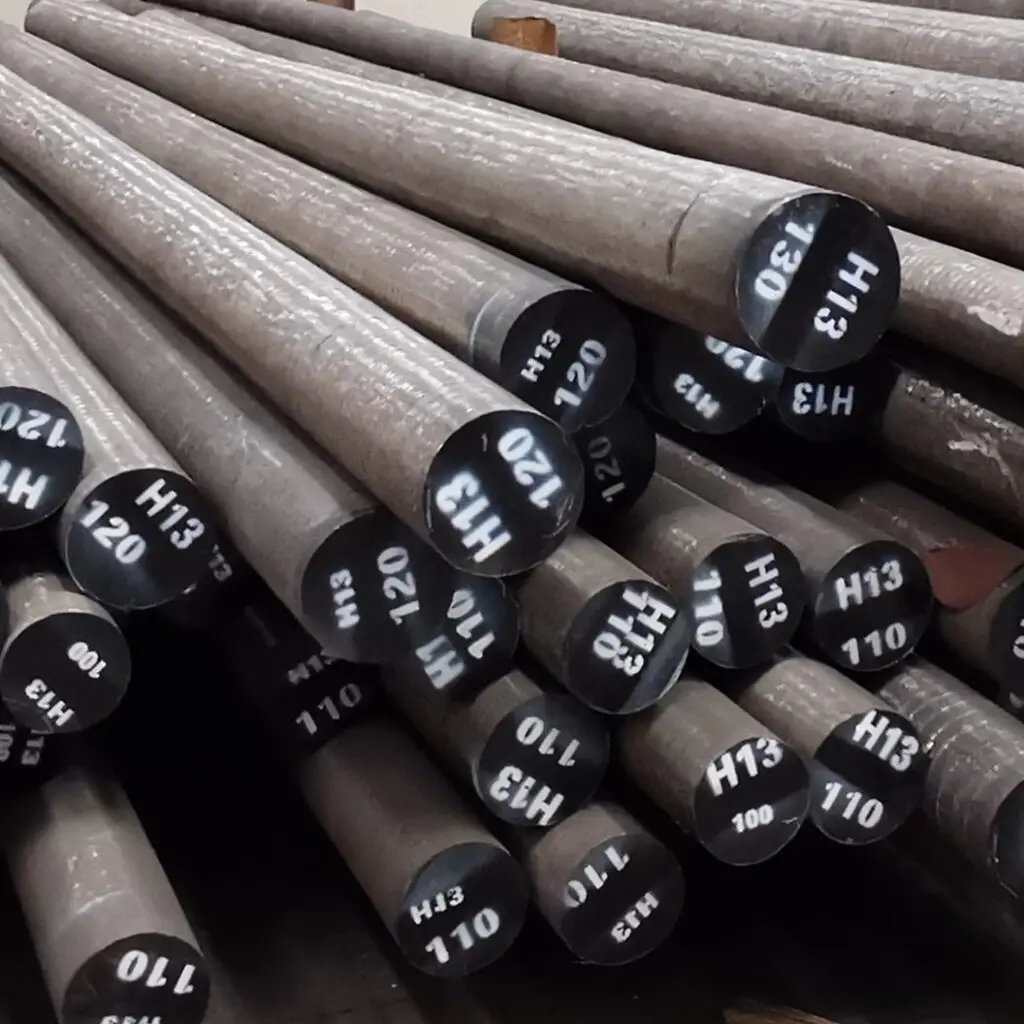
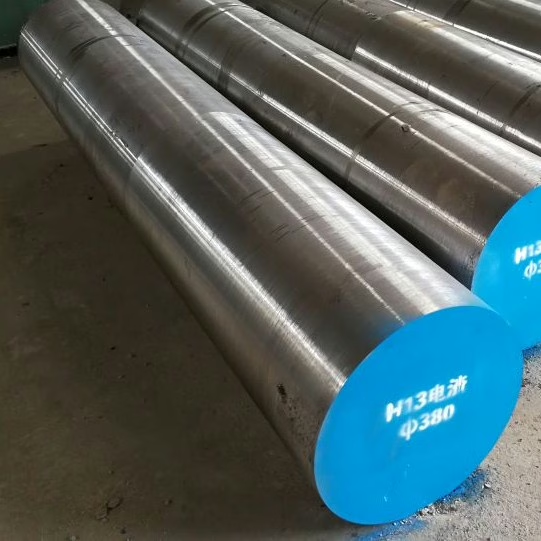
Challenges in H13 Heat Treatment
The heat treatment of H13 tool steel is the most critical and complex step in its manufacturing process, directly determining the tool’s final mechanical properties and performance. Any error in this process will inevitably lead to reduced tool life and premature failure. For detailed information on H13 heat treatment, please refer to the H13 Steel Heat Treatment Guide.
Decarburization
Decarburization is the loss of carbon from the surface of the steel, typically occurring when H13 is heated in furnace atmospheres that are not properly controlled. This carbon depletion results in a soft, low-performance outer layer that lacks the intended hardness and wear resistance, making the tool susceptible to premature wear and failure in service. H13 is particularly vulnerable to surface degradation effects during high austenitizing temperatures.
To prevent decarburization, H13 should be annealed and/or hardened in controlled neutral atmospheres, vacuum furnaces, or neutral-salt furnace environments. Vacuum furnaces, for instance, minimize oxygen levels, preventing both carburization and decarburization. Salt baths are also effective in minimizing scaling and surface decarburization.
Distortion and Cracking
Rapid or uneven heating and cooling (quenching) of H13 steel generates significant internal thermal stresses and phase transformation stresses.If these stresses exceed the steel’s yield strength, the part may distort (warp, bend, bow, or twist); if they exceed its ultimate strength, catastrophic cracking can occur. This risk is particularly high for parts with complex geometries or large variations in section thickness, as these features promote non-uniform temperature distribution during thermal cycling.
Mitigation strategies include:
- Preheating: Heating the part slowly and uniformly, often in stages, or preheating to an intermediate low temperature soak (e.g., 780-840°C / 1435-1545°F) before the final austenitizing temperature helps minimize temperature gradients and thermal stresses.
- Controlled Air Quenching: H13 is a deep-hardening, secondary-hardening steel that allows it to be hardened in large sections through air cooling. Air hardening minimizes residual stresses after hardening, reducing the risk of quench cracking and distortion. Quenching must be precise, often to a specific temperature (e.g., 66–93°C / 150–200°F) before immediate tempering.
- Stress Relieving: Stress-relief treatments are highly recommended for precision tools after rough machining to alleviate residual stresses introduced during shaping.
Retained Austenite
Retained austenite refers to the portion of austenite that does not fully transform into martensite during quenching, remaining in the microstructure at room temperature. This phenomenon is more common in steels with higher carbon and alloy content (like H13), as these elements lower the martensite start (Ms) and finish (Mf) temperatures, potentially below room temperature. Retained austenite is undesirable because it is inherently softer than martensite and is unstable.
The presence of retained austenite can lead to several problems:
- Dimensional Instability: It can spontaneously transform to untempered martensite during service or subsequent processing, causing unwanted volume expansion and dimensional changes in tools, which is critical for precision applications.
- Brittleness: The fresh martensite formed from the transformation of retained austenite is untempered and therefore brittle, increasing the tool’s susceptibility to cracking and premature failure under impact loads.
To address retained austenite, multiple tempering treatments are often essential. For H13, tempering temperatures in the range of 540–620°C (1000–1150°F) are commonly used, usually requiring two or three cycles to ensure complete transformation and stabilization of the microstructure. In some cases, sub-zero or cryogenic treatments (cooling to -75 to -196°C / -103 to -320°F) can be incorporated into the heat treatment cycle to reduce the amount of retained austenite further. However, prompt tempering immediately after quenching or sub-zero treatment is crucial for stabilizing newly formed martensite and preventing embrittlement.
Common In-Service Failure Modes
H13 tool steel may still exhibit multiple failure modes under extreme operating conditions. Why does H13 tool steel fail prematurely?
Thermal Fatigue and Heat Checking
Thermal fatigue, commonly known as “heat checking,” is the most prevalent failure mechanism for H13 in hot-work applications, especially in die-casting dies, forging dies, and hot extrusion dies. It manifests as a network of fine, shallow cracks on the tool’s working surface. This phenomenon is caused by repeated temperature fluctuations (rapid heating and cooling cycles) during tool operation, which induce cyclic thermal stresses. These stresses, particularly tensile stresses that develop on cooling, initiate microscopic cracks that grow over time. The presence of liquid metal (like aluminum in die-casting) filling these cracks under high pressure further exacerbates the problem, making part extraction difficult or impairing surface quality. Poor thermal fatigue resistance is often cited as a major factor limiting the life of hot-work tool steels.
Gross Cracking
Gross cracking, as distinct from the fine network of heat checks, refers to large-scale, deep fractures that can lead to the catastrophic failure and immediate interruption of tool use. This type of cracking is often a result of a complex interplay of high mechanical stresses, severe thermal stresses, and underlying material defects. Key contributing factors include:
- High Mechanical Stress: Forging dies, for example, are subjected to continual mechanical stress cycles that can cause fatigue fracture, especially in areas of stress concentration like small radii.
- Thermal Stress: Uneven or rapid heating and cooling can create internal stresses that lead to warping or cracking, particularly in complex geometries. An example is an H13 hot extrusion die that cracked due to poor design for liquid quenching and delayed tempering.
- Underlying Material Defects: Issues such as excessive retained austenite, coarse grain size, carbide segregation (especially in grain boundaries), quench embrittlement, or even deep stamp marks can significantly lower the steel’s toughness and act as crack initiation sites.
Plastic Deformation and Wear
Tools made of H13 can undergo plastic deformation, losing their intended shape or dimensions, especially under extreme pressure and temperature. This typically occurs if the applied loads exceed the material’s yield strength, or if the heat treatment results in insufficient hot hardness to resist softening at elevated operating temperatures.
Wear is a predominant failure mechanism, especially in forging (accounting for nearly 70% of die failures in hot forging) and extrusion, where continuous material movement and contact occur.
- Abrasive Wear: Caused by hard particles (e.g., oxides, scale, or inclusions) that are forced against and slide along the tool surface, creating grooves and removing material.
- Adhesive Wear: Involves localized bonding between contacting surfaces, leading to material transfer or loss, often resulting in “galling” or buildup of workpiece material on the tool. Both types are exacerbated by intense friction and high temperatures at the tool-workpiece interface.
Conclusion
H13 tool steel, as a highly mature material, has been widely used in the market for decades. Although its application presents various difficulties and challenges, these remain within manageable limits. If you are interested in H13 steel, we welcome your inquiries.

